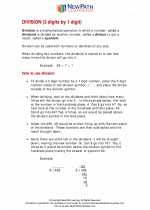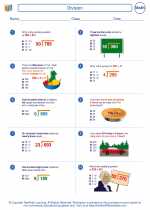Six-Sided Die: Explanation and Study Guide
A six-sided die, also known as a d6, is a cube with each face showing a different number from 1 to 6. It is a common tool used in many games and probability experiments. Understanding the properties and possibilities of a six-sided die is important for various mathematical and gaming applications.
Properties of a Six-Sided Die
Key properties of a six-sided die include:
- It has six faces, each labeled with a different number from 1 to 6.
- The opposite faces of the die always add up to 7 (e.g., 1 and 6, 2 and 5, 3 and 4).
- When the die is rolled, each face has an equal probability of landing face-up.
Study Guide
Here are some key concepts and topics to study related to six-sided dice:
- Basic Counting: Understand the basic concept of counting the number of outcomes when rolling a six-sided die.
- Probability: Learn about the concept of probability and how it relates to rolling a six-sided die. Calculate the probability of landing on a specific number or a range of numbers.
- Sum of Two Dice: Explore the possible sums when rolling two six-sided dice. Use this to understand the concept of probability distributions and the likelihood of getting specific sums.
- Games and Applications: Study how six-sided dice are used in various games, such as board games, role-playing games, and gambling. Understand the role of probability in these applications.
- Mathematical Notation: Familiarize yourself with the mathematical notation used to represent the outcomes of rolling a six-sided die, such as using the numbers 1 to 6 or the symbol "d6."
By mastering these concepts, you can develop a solid understanding of the properties and applications of six-sided dice, as well as strengthen your skills in counting, probability, and mathematical reasoning.
Good luck with your studies!
.◂Math Worksheets and Study Guides Sixth Grade. Division
Study Guide Division
Division  Worksheet/Answer key
Worksheet/Answer key Division
Division  Worksheet/Answer key
Worksheet/Answer key Division
Division  Worksheet/Answer key
Worksheet/Answer key Division
Division 

 Worksheet/Answer key
Worksheet/Answer key
 Worksheet/Answer key
Worksheet/Answer key
 Worksheet/Answer key
Worksheet/Answer key

The resources above cover the following skills:
Connections to the Grade 6 Focal Points (NCTM)
Number and Operations: Students' work in dividing fractions shows them that they can express the result of dividing two whole numbers as a fraction (viewed as parts of a whole). Students then extend their work in grade 5 with division of whole numbers to give mixed number and decimal solutions to division problems with whole numbers. They recognize that ratio tables not only derive from rows in the multiplication table but also connect with equivalent fractions. Students distinguish multiplicative comparisons from additive comparisons.